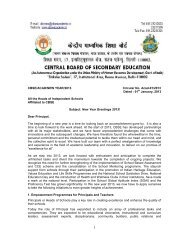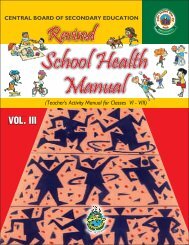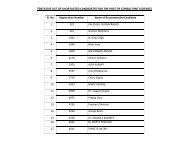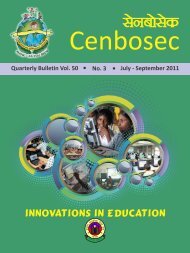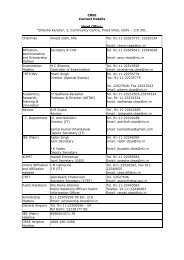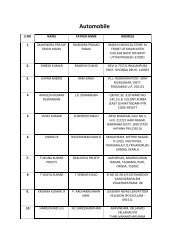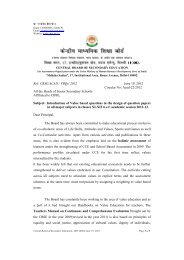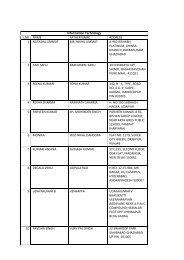CCE Manual VI - VIII - CBSE
CCE Manual VI - VIII - CBSE
CCE Manual VI - VIII - CBSE
Create successful ePaper yourself
Turn your PDF publications into a flip-book with our unique Google optimized e-Paper software.
Tools and Techniques of Evaluationambience and learning culture of an institution. As far as interpretationis concerned, attainment can be measured at different levels.• With reference to the learner himself/herself – his/her current stateof progress, strengths, learning gaps, etc.• With reference to the criteria - the expected level of learning keepingin view the required skillsTools are primarily instruments of collecting data and information. Forexample, questions, observations, tests, inventories, record or documentanalysis, etc. are tools. Tools, in the context of <strong>CCE</strong>, require situationsfor application. For example, observation as a tool needs situations likedebating competition, engagement in a project activity, etc. A teachercan observe a student while he is debating or working on a project,assignment or questions in a written examination.Although it is difficult to precisely define and separate out tools fromtechniques, for the operational purposes of <strong>CCE</strong> we may, classify situationswhich are occurring either naturally or contrived for assessment – astechniques.Continuous and Comprehensive EvaluationA sample list of tools and techniques that can be used in <strong>CCE</strong> are statedbelow:ToolsToolsTechniques1. Questions 1. Examination2. Observation 2. Assignments3. Tests and inventories 3. Quizzes and competitions4. Checklist 4. Projects5. Rating scale 5. Debates6. Anecdotal records 6. Elocution7. Document analysis 7. Group discussions8. Portfolio 8. Club activities9. Experiments10. Research66






